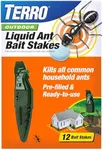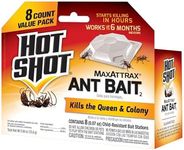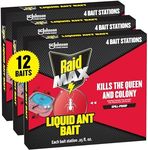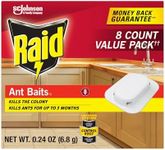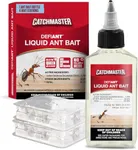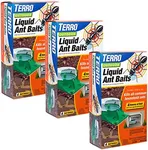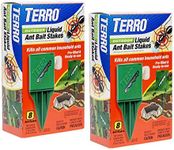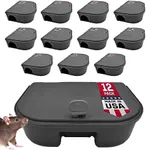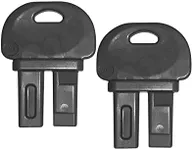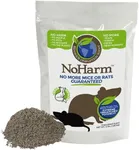Buying Guide for the Best Non-Toxic Ant Traps
Choosing the right non-toxic ant trap can be a bit overwhelming with the variety of options available. The key is to understand what features are important and how they align with your specific needs. Non-toxic ant traps are designed to eliminate ants without using harmful chemicals, making them safe for use around children, pets, and food. Here are some key specifications to consider when selecting the best non-toxic ant trap for your situation.Active IngredientsThe active ingredients in non-toxic ant traps are crucial because they determine how the trap works to eliminate ants. Common non-toxic ingredients include borax, diatomaceous earth, and essential oils. Borax is effective but should be used with caution around pets and children. Diatomaceous earth is safe and works by dehydrating the ants. Essential oils like peppermint or tea tree oil repel ants naturally. Choose an active ingredient based on your safety needs and the severity of the ant problem.
Type of TrapNon-toxic ant traps come in various forms, such as bait stations, sticky traps, and liquid baits. Bait stations are enclosed units that attract ants to carry the bait back to their colony, effectively eliminating the source. Sticky traps capture ants on a sticky surface, preventing them from moving further. Liquid baits are placed in small containers where ants consume the liquid and take it back to their nest. Consider the type of trap based on where you plan to place it and the level of infestation.
Ease of UseEase of use is an important factor, especially if you are not experienced with pest control. Some traps require more setup and maintenance than others. Bait stations and liquid baits are generally easy to use and require minimal intervention once placed. Sticky traps might need to be replaced more frequently. Choose a trap that fits your comfort level with handling and maintenance.
Coverage AreaThe coverage area of an ant trap refers to the space it can effectively protect. Some traps are designed for small, localized areas, while others can cover larger spaces. If you have a widespread ant problem, you may need multiple traps or a trap with a larger coverage area. Assess the size of the area you need to protect and choose a trap that matches that requirement.
SafetySafety is a paramount concern, especially in households with children and pets. Non-toxic traps are generally safe, but it's important to read the labels and instructions carefully. Ensure that the trap you choose does not pose any risk to your family or pets. Look for traps that are enclosed or have child-resistant features to prevent accidental exposure.
EffectivenessEffectiveness is determined by how well the trap eliminates ants and prevents future infestations. Some traps work quickly, while others may take a few days to show results. Read reviews and product descriptions to gauge the effectiveness of the trap. Consider the severity of your ant problem and choose a trap that has a proven track record of success.
